July 4-11, 2022
I’m posting this Scotland update more than 3 weeks after leaving the country because we’ve been busy. Not necessarily busy with traveling, so much as busy trying to plan out future parts of the trip. It’s counterintuitive, but for the cities we’ve only been staying in for a day or two, I’ve felt like I’ve had more time to write than I do when we’re staying for 4-5 days somewhere.
That’s because during longer stays, we’ve been focusing on planning out the next legs of our trip. After longer stays in Paris, Bruges, Amsterdam, and Zurich, I’m happy to report that we’ve now got plans through the first week of October. I’m behind on blogging, though, so let’s get back to Scotland.
Glasgow
We started with an early morning ferry from Belfast to Southwestern Scotland, followed by a bus to the city of Glasgow. Neither Karen nor I had been there before, and had only planned one night as a stopping point after a long day of travel, but we really loved the place. After one of the cheaper lunches we’d had in a while (yay!) we let Henry stay back at the hotel (teenagers need space sometimes!) and went with the two younger boys to the People’s Palace museum, which included a bunch of interesting exhibits about the history of life in Glasgow including this hands on example of what it was like to wash clothes in a “steamie” or communal laundry facility:
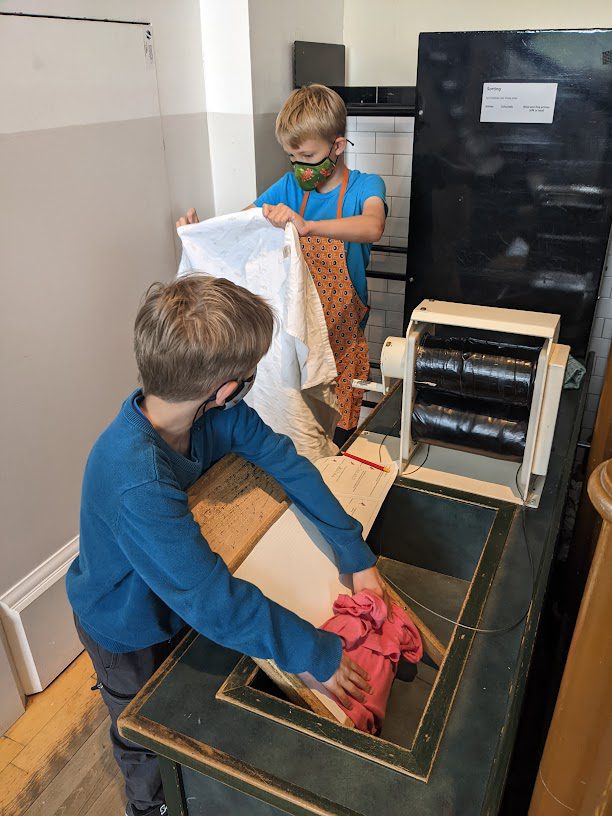
Speaking of the history of life in Glasgow, here’s the Glasgow subway, which we thought looked like it came from the 50’s. (It was actually built in 1896, the fourth oldest subway in Europe, and only has a single loop around the city going clockwise and counterclockwise.)

I’m not being fair to Glasgow, though, because it’s actually a lively and modern town of over 600,000 (the biggest in Scotland) and it had one of the best museums we’ve seen, housed at the University of Glasgow. The university, founded in 1451, is gorgeous and was the home of such famous names as Adam Smith, Lord Kelvin, James Watt, and Joseph Lister.
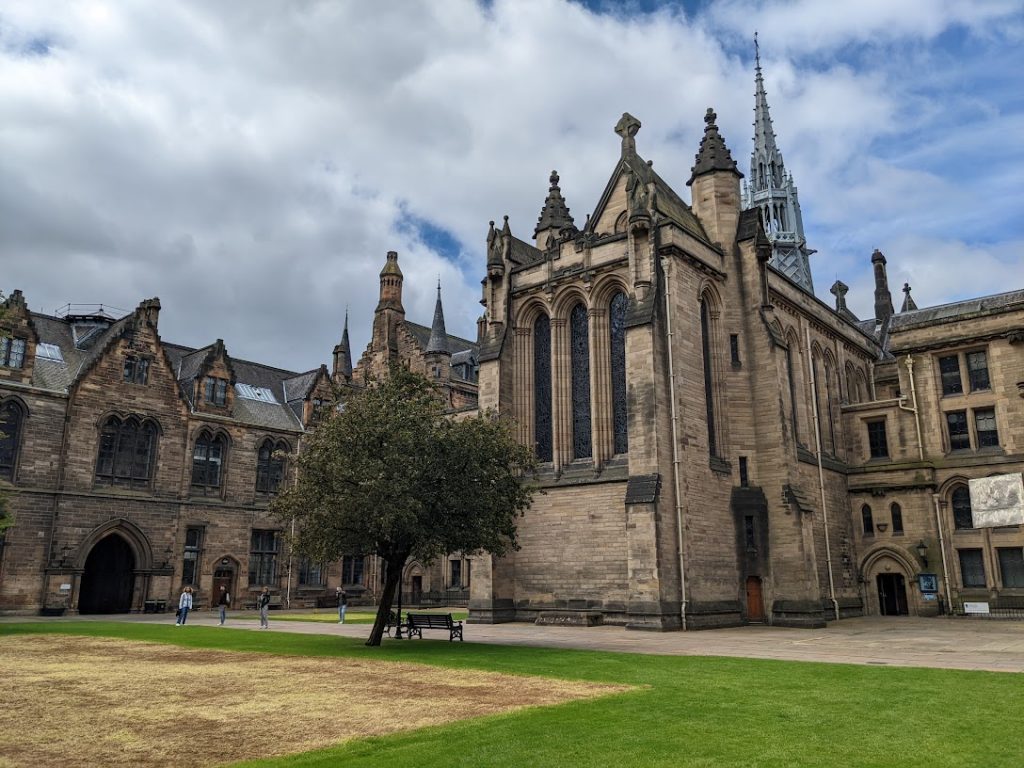

We were there primarily for the Hunterian Museum–more about the main museum in a bit–but one of the things Karen was most excited to see in all of Scotland was the Mackintosh House. The house was built in 1906, but is famous for the work done to it by the architect/artist couple Charles and Margaret Mackintosh. First, though, does this look like it’s over 100 years old?
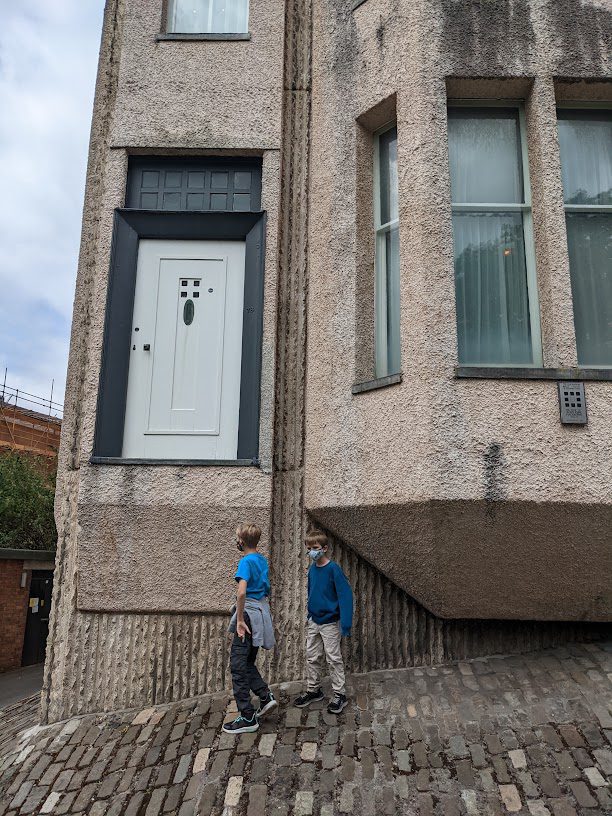
This is, of course, not the original house, but does have the same shape–if a different facade. The university demolished the original in the 1960’s to make room for student housing, but saved the interior and made detailed measurements before constructing this replica attached to the art gallery a couple of decades later. (Seems like they could have put the student housing next to the art gallery instead, but what do I know?)
It’s a really striking home with artful consideration across every inch, although I’m not sure what it would have been like to live there–in one room they tried to make all the horizontal surfaces at the same levels so the chairs seemed too low to me and the desk too high. Looks nice, though. Here are some pictures:
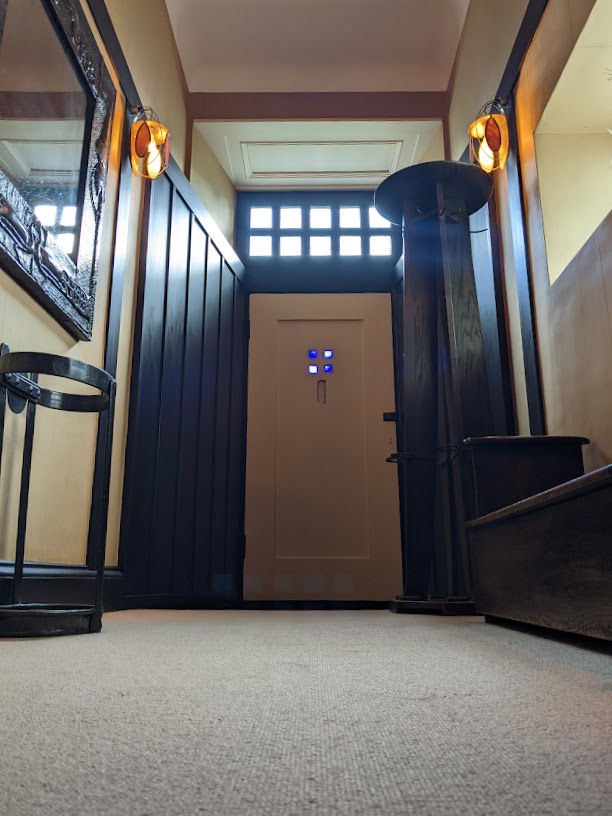
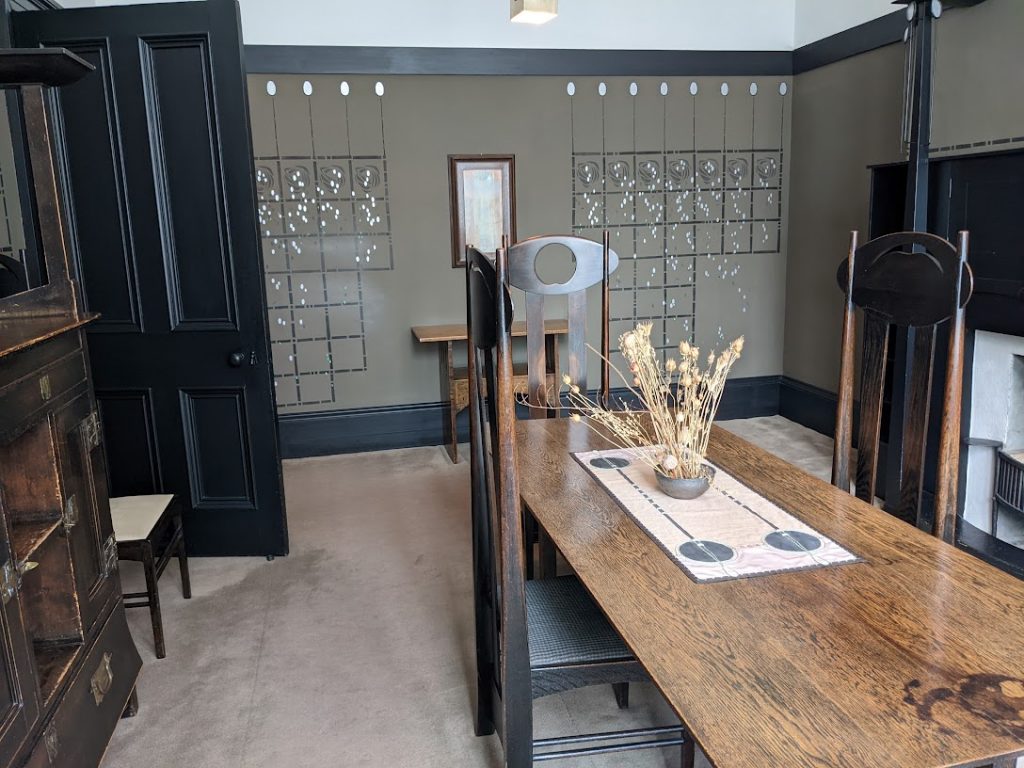
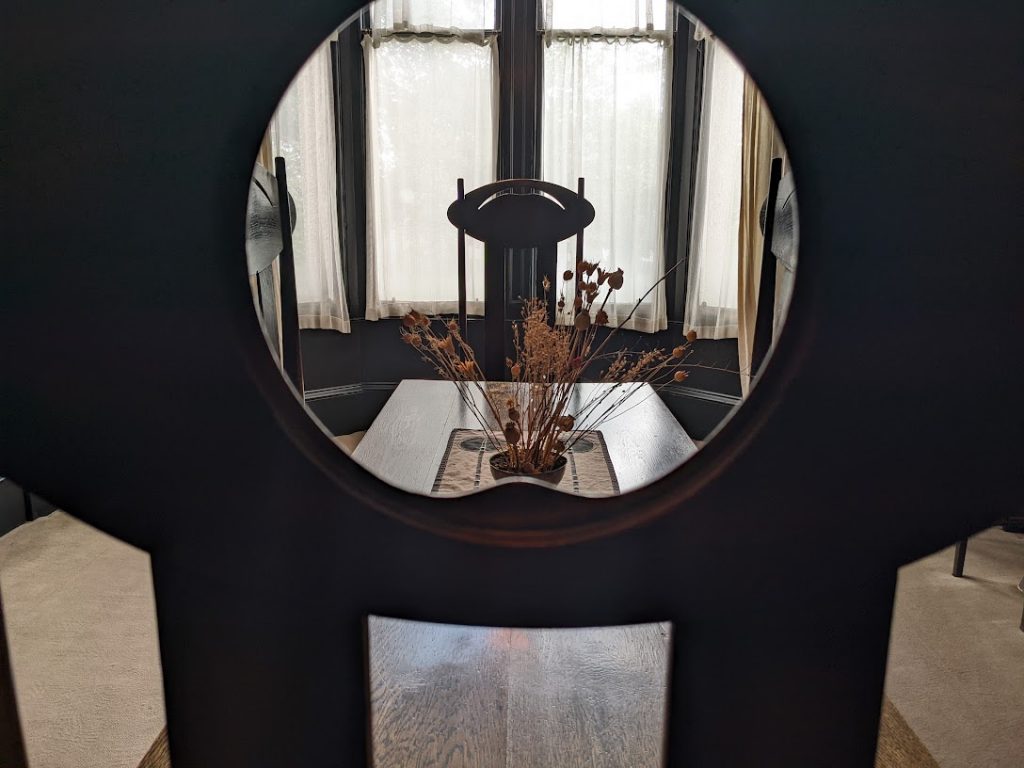
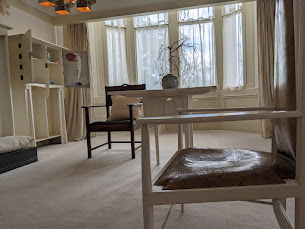
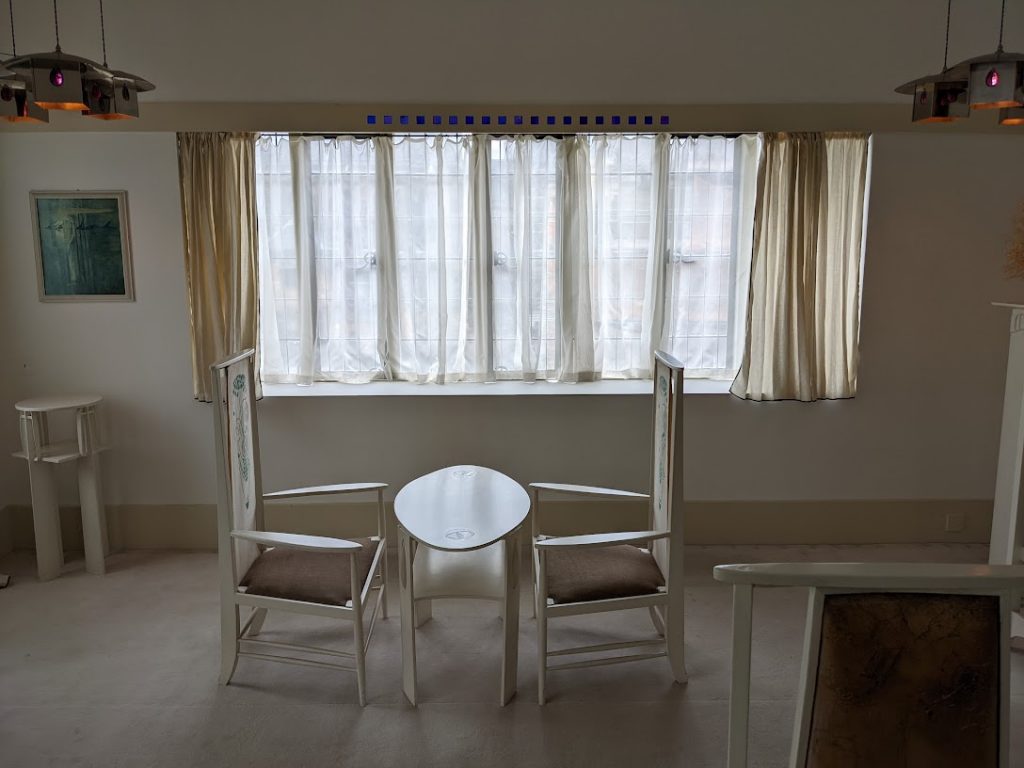
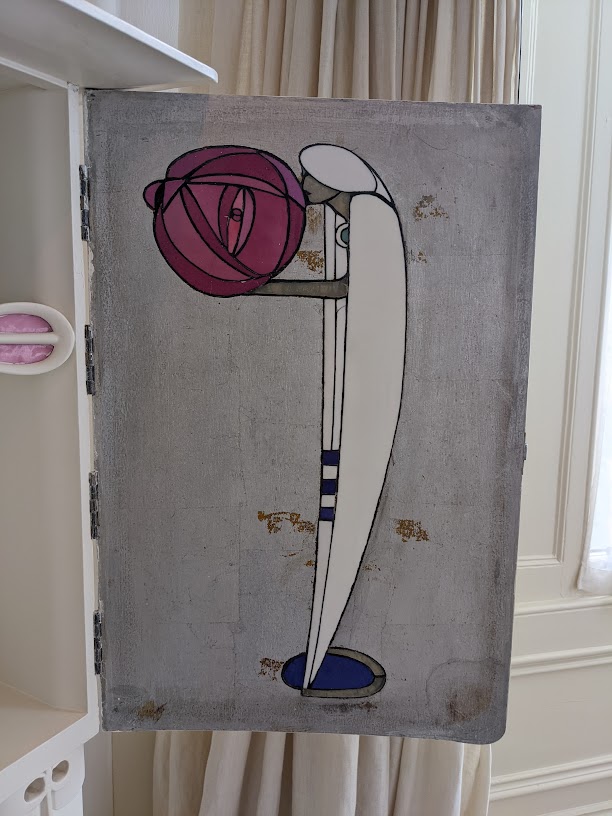
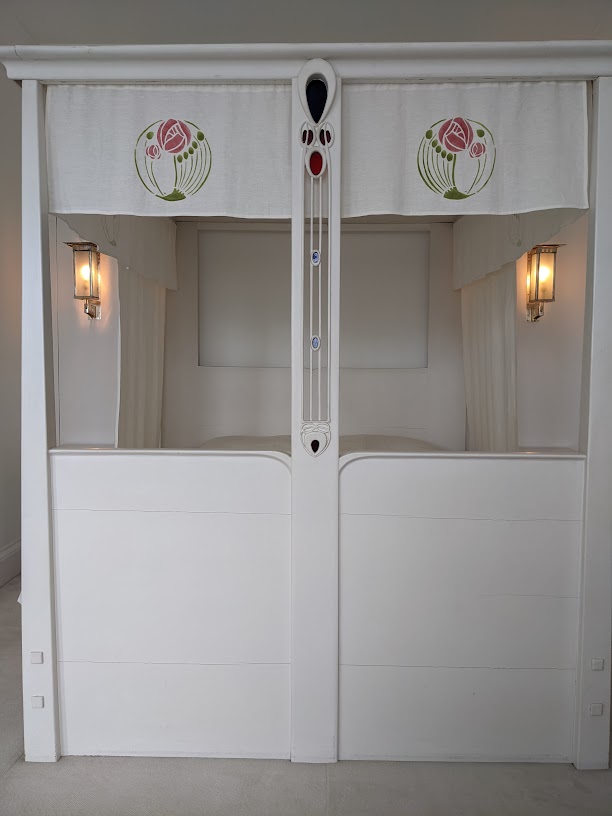
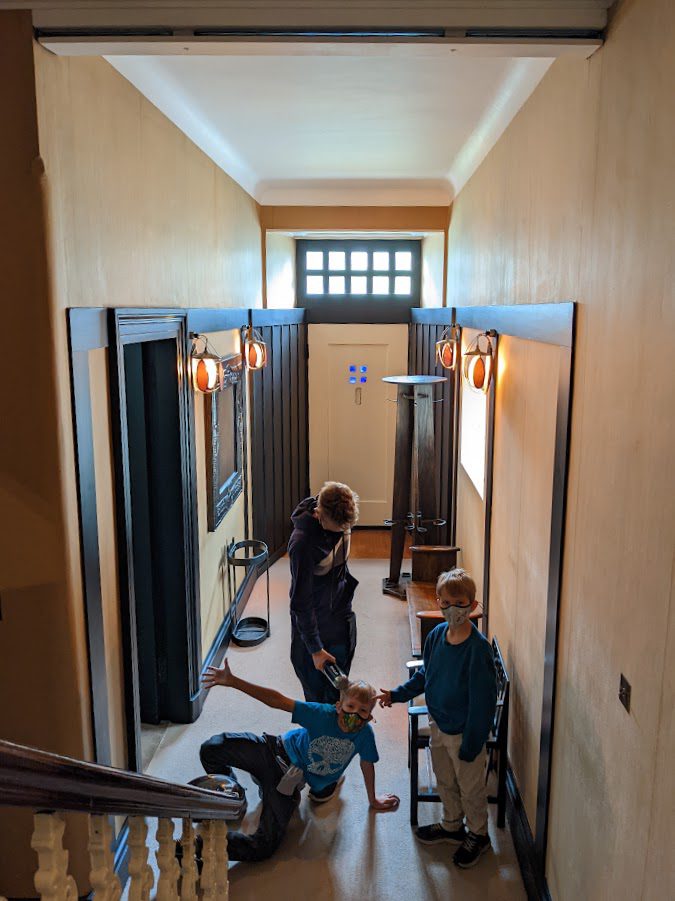
Although we visited the museum to see this house, it was actually much smaller than the main Hunterian Museum, which was enormous and eclectic, and based on donations in 1783 upon the death of William Hunter, a pioneering obstetrician and collector of interesting things.
The younger boys enjoyed playing drums with a guy who just happened to be there that day in the children’s section, but some of the most interesting content was what Hunter had acquired as “spoils” of British exploration and imperialism during that era. There was a lot of material from Polynesia and the Americas in particular. Aware of this legacy, the museum had recently undertaken a project to “decolonize” the collection, tapping a diverse set of community members to consider a range of elements in the collection to debate and discuss how one might think about these pieces from a modern perspective. I didn’t take any pictures of those arguments, but I liked this 1674 map of the world from China:
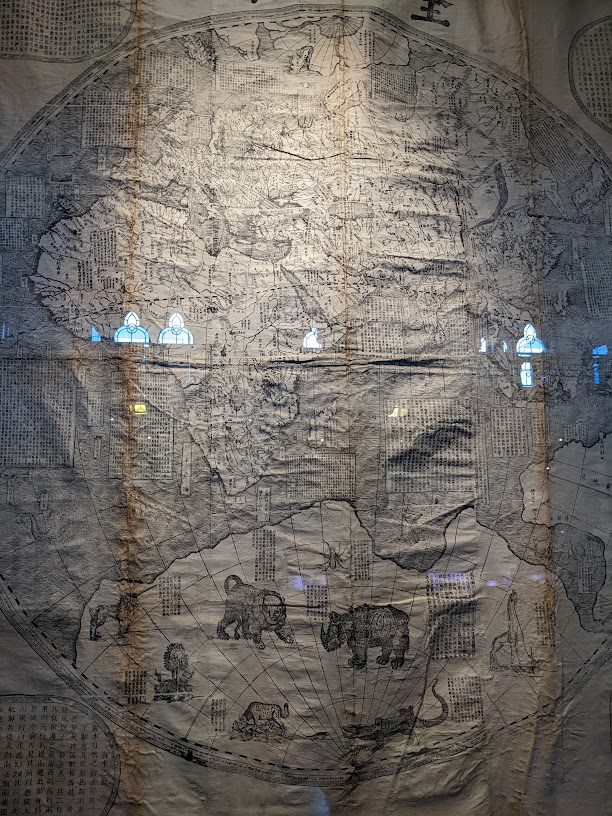
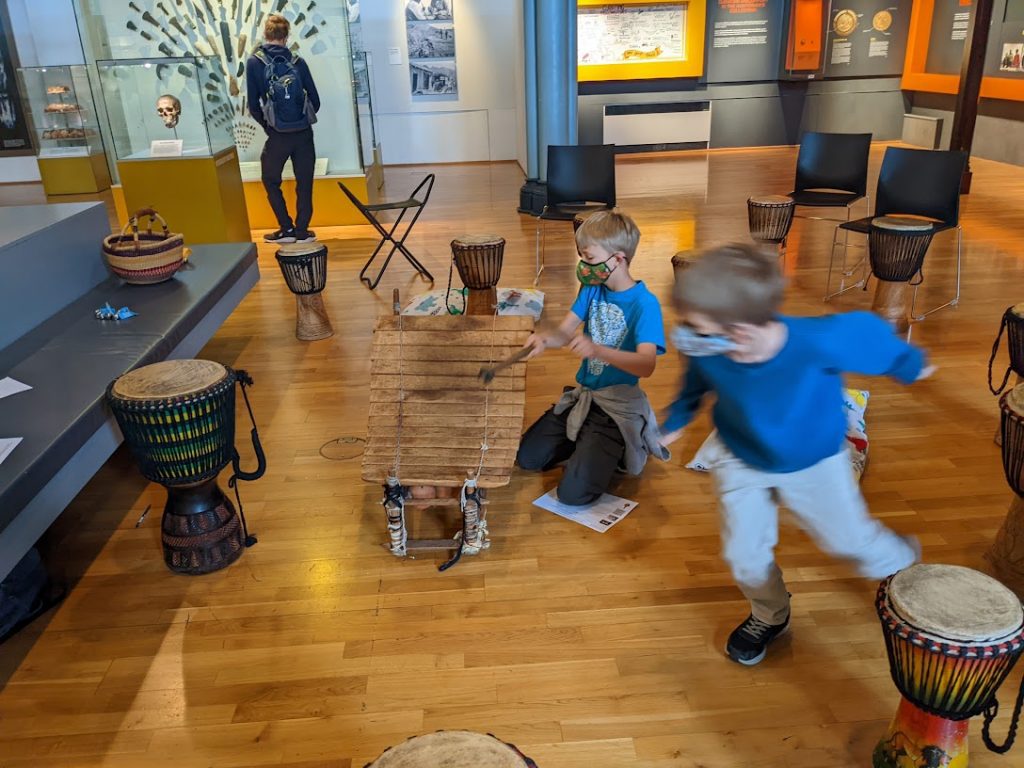
In the upper part of the main gallery, they had a lot of exhibits from medical history including Lister’s successive attempts to create better and better sterilization practices for operations, launching the change in practice used everywhere today, and a bunch of the instruments created by Lord Kelvin. I knew Kelvin as an important physicist, primarily because his name is on an entire temperature scale, but didn’t realize that he was basically one of the greatest engineers of all time. My favorite was this harmonic analyzer, which he used to understand changes to atmospheric temperature and pressure.
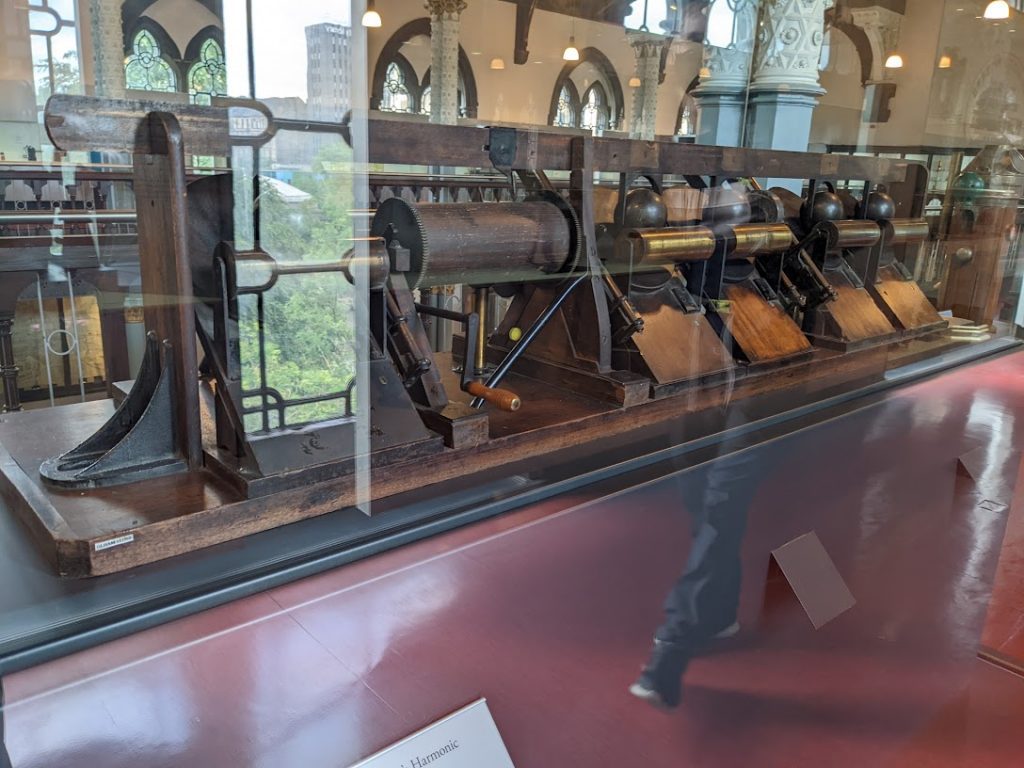
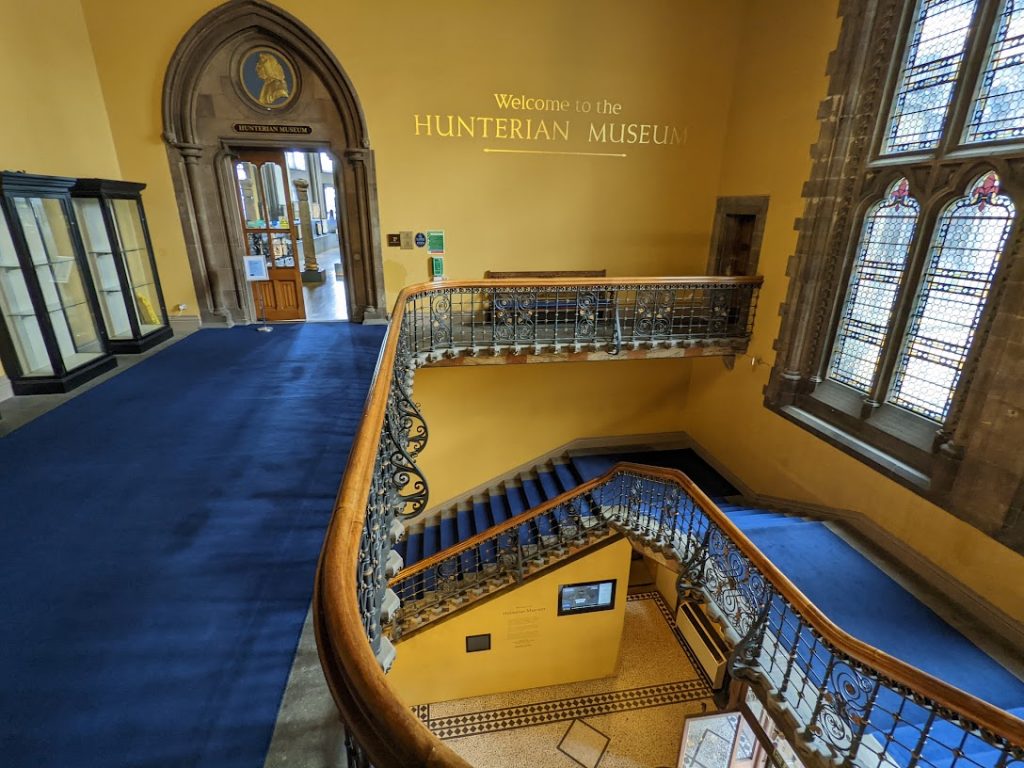
Edinburgh
After spending most of the day in Glasgow, we took a short train to Edinburgh. We stayed at a pretty typical hostel with all of us staying in a single room with two triple bunk beds, but the memorable thing to the boys is that the only other guests at the hostel were a group of about 80 Dutch high school kids. Because the wi-fi didn’t work in the hostel, the boys theorized that it was because these kids were hogging it. Weeks later, whenever someone mentioned Dutch kids (as we did while in Amsterdam), their first association was that Dutch kids like to hog wi-fi.
Of course, these kids were in Edinburgh because it’s gorgeous and has a rich history. Here are a couple of shots to illustrate the beauty:
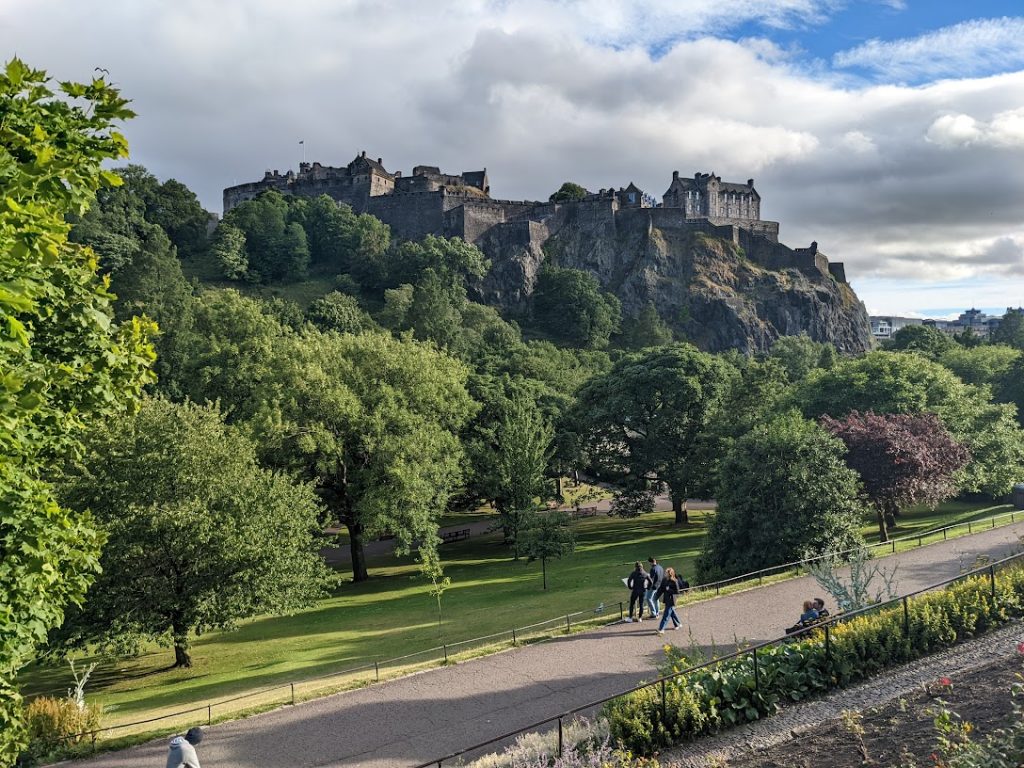
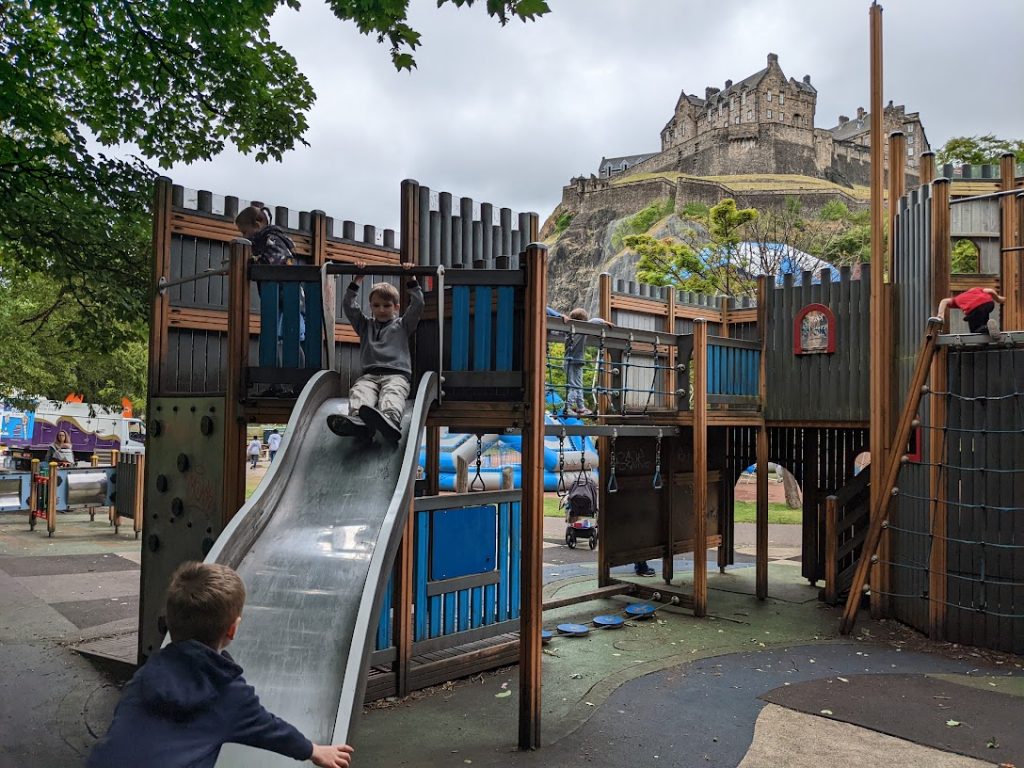
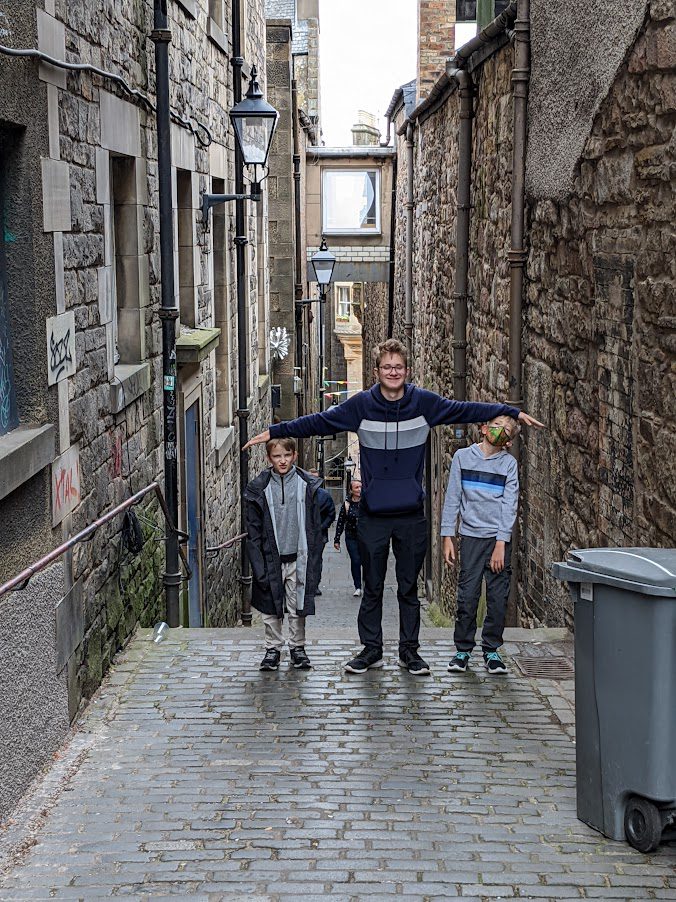
This last picture is one of the many “closes” or private alleyways that lead downhill from the main strip of the old town. The most interesting one, Mary King’s Close (named after the merchant who operated there), was “closed” to have a government building constructed on top of it in the 1700’s. It was then rediscovered a few decades ago and opened in 2003 as a tourist attraction where you can see how people lived in Edinburgh 400 years ago. (No pictures are allowed in the tour, but you can see a few at the link above.)
Speaking of history, although Adam Smith was based out of the University of Glasgow, he did some of his seminal work and lectures in economics in Edinburgh. This statue was enough to get Charlie to even smile for a picture:
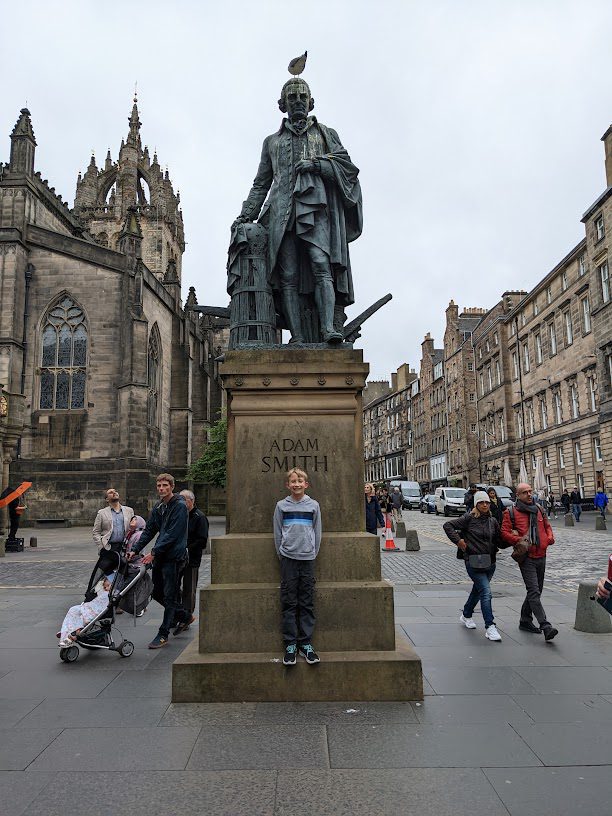
Speaking of history and culture, the number one export of Scotland is of course Scotch whisky (no “e”) and I’ve enjoyed drinking it occasionally ever since my brother and I first visited in 1999. A big part of why is because while in Edinburgh, we took part in the cheesy “Scotch Whisky Experience” which had a Disney-style barrel ride (including animatronic back country distillers) that dumped you out at the end for a free tasting.
I was excited to return and was not disappointed. This time around they had upgraded the tour to include a holographic ghost (fancy!) and I paid a little extra to sample a whisky from each of four of the main regions–my favorite is Highland.
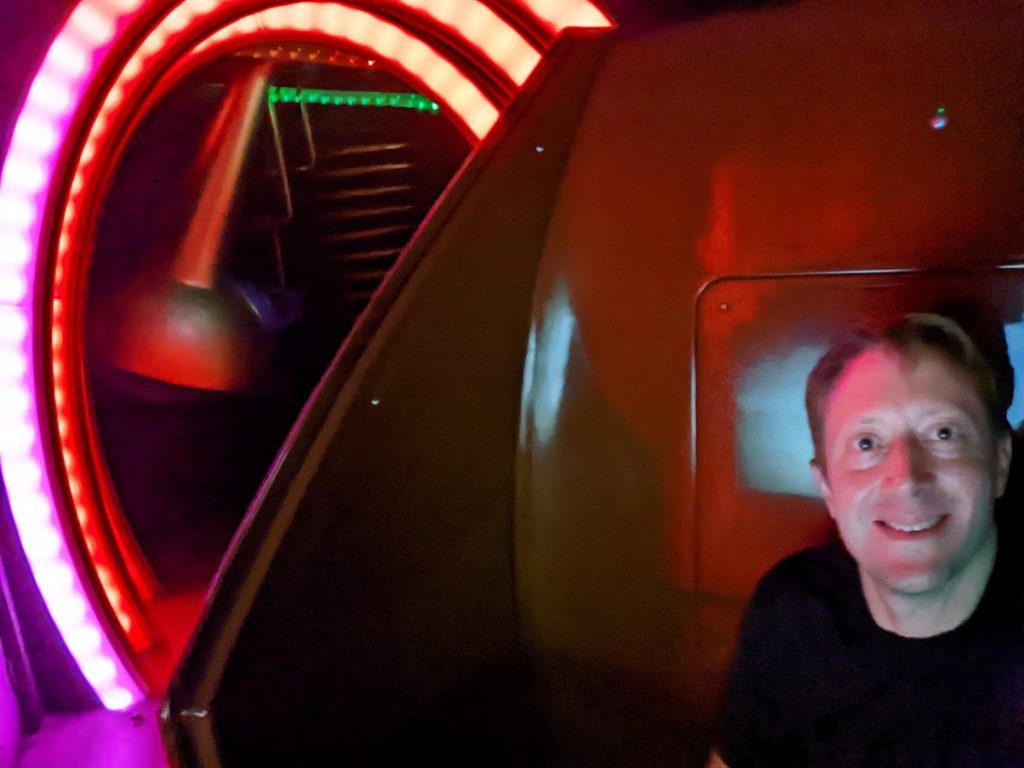
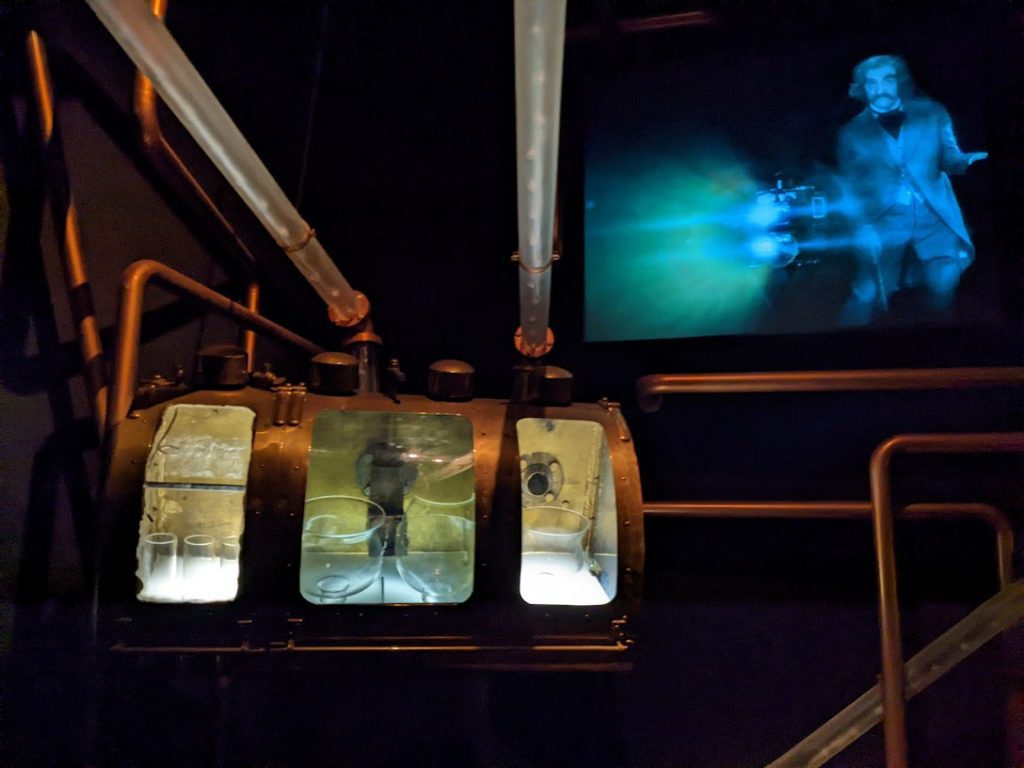
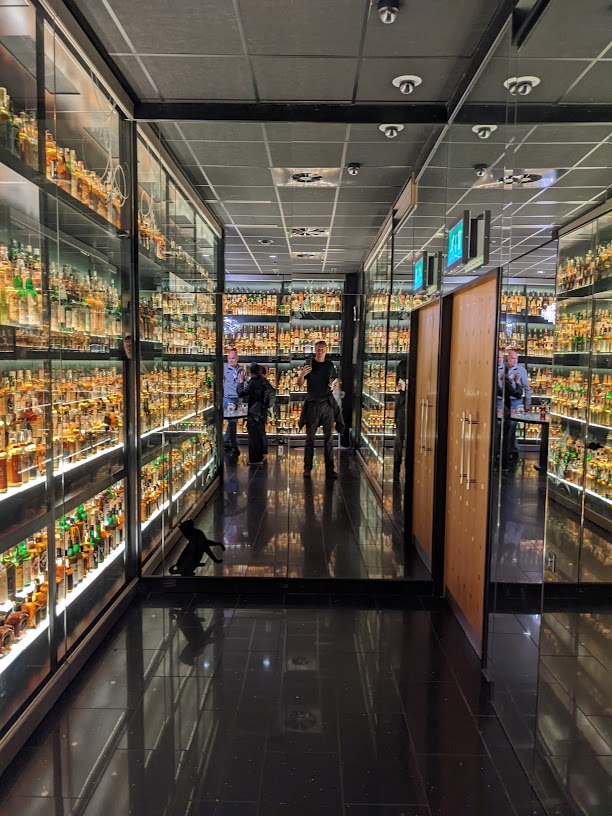
Highlands
Coincidentally, my whisky preference aligns with the next part of the trip, because the following morning we rented a car and headed for four nights in a rented farmhouse in the Scottish Highlands. One of the most beautiful regions in the world, we’d been planning this portion of the trip around the availability of the cabin so we could have a place to rest a little with more space (three bedrooms!) for our animal-loving kids. It didn’t disappoint.
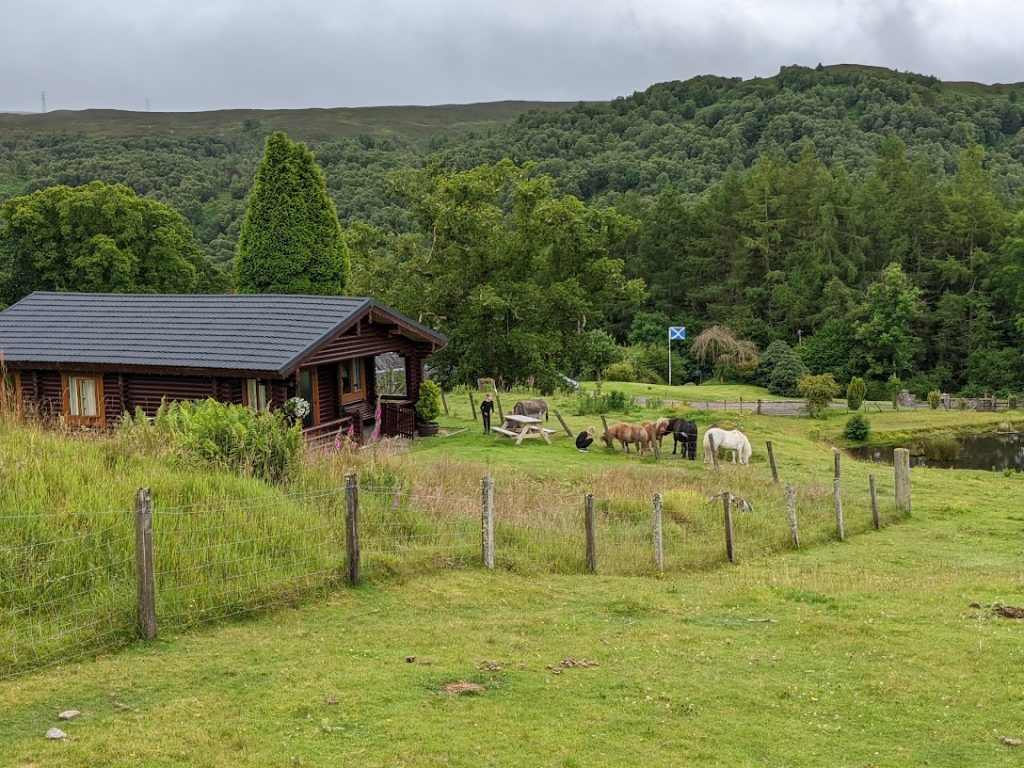
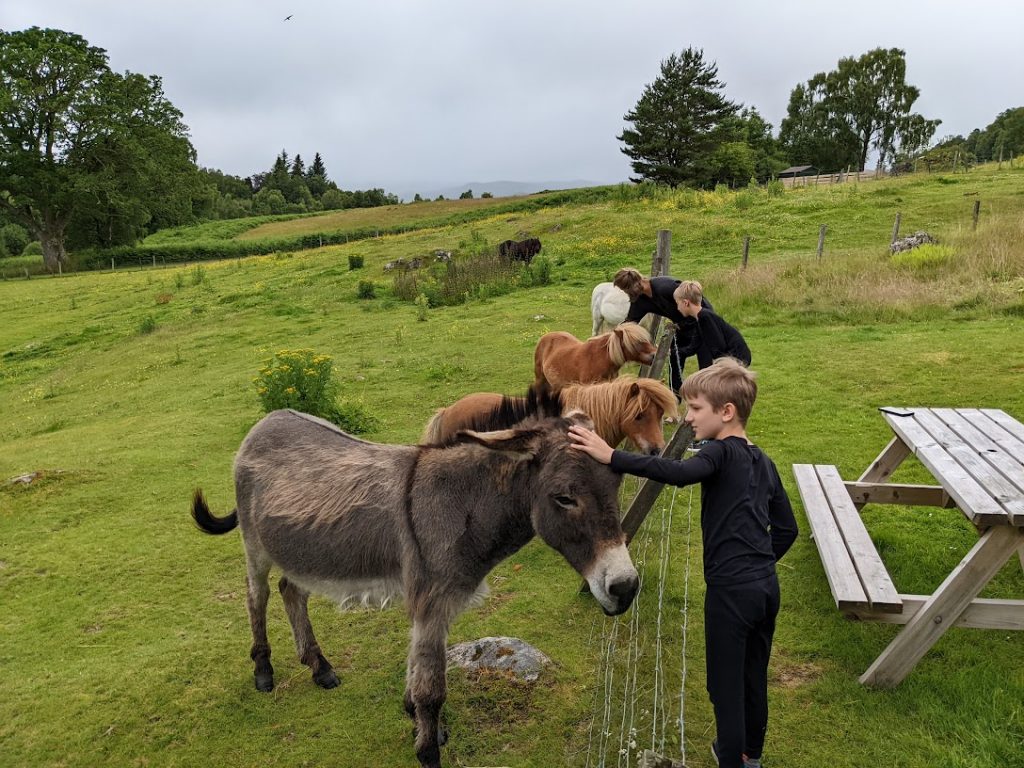

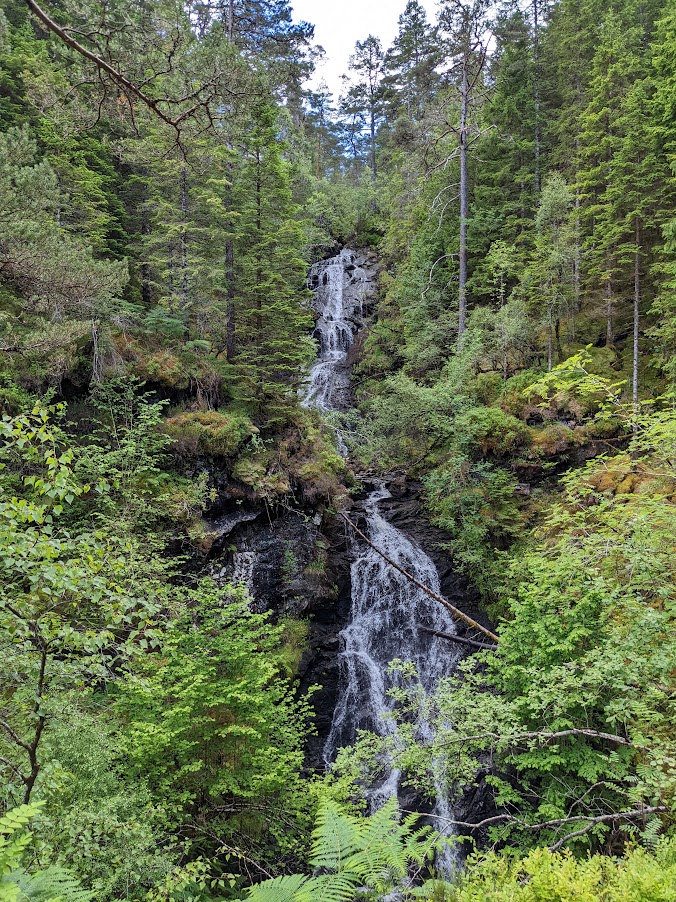

The only flaw of the cabin was the fact that wi-fi was a little spotty (and non-existent one day), even though there didn’t appear to be any Dutch kids in our presence. Luckily, they had an extensive library of DVDs to borrow, so after we explained to the kids what a DVD was, we spent a couple nights watching Braveheart, which everyone enjoyed. (The other nights they also enjoyed The Naked Gun and, in the same vein, Hot Shots!)
Inspired by cinematic battles, we thought we’d check out the site of a real one, so on our second day headed to near Inverness to see the museum for the Battle of Culloden. That’s where, in 1746, the Jacobite army of Charles Edward Stuart (known as “Bonnie Prince Charlie”) was decisively defeated by a British government force. Since “Jacobite” refers to people who wanted James II to be king and we were visiting with our sons James and Charlie (we let Henry be a teenager and stay home), we had a lot of fun pretending the tour guide was talking about our kids as we learned about the battle. Mostly fun at least–Charlie seemed a little incompetent, which wasn’t fair to our Charlie, who is awesome, if occasionally incapable of smiling for pictures.
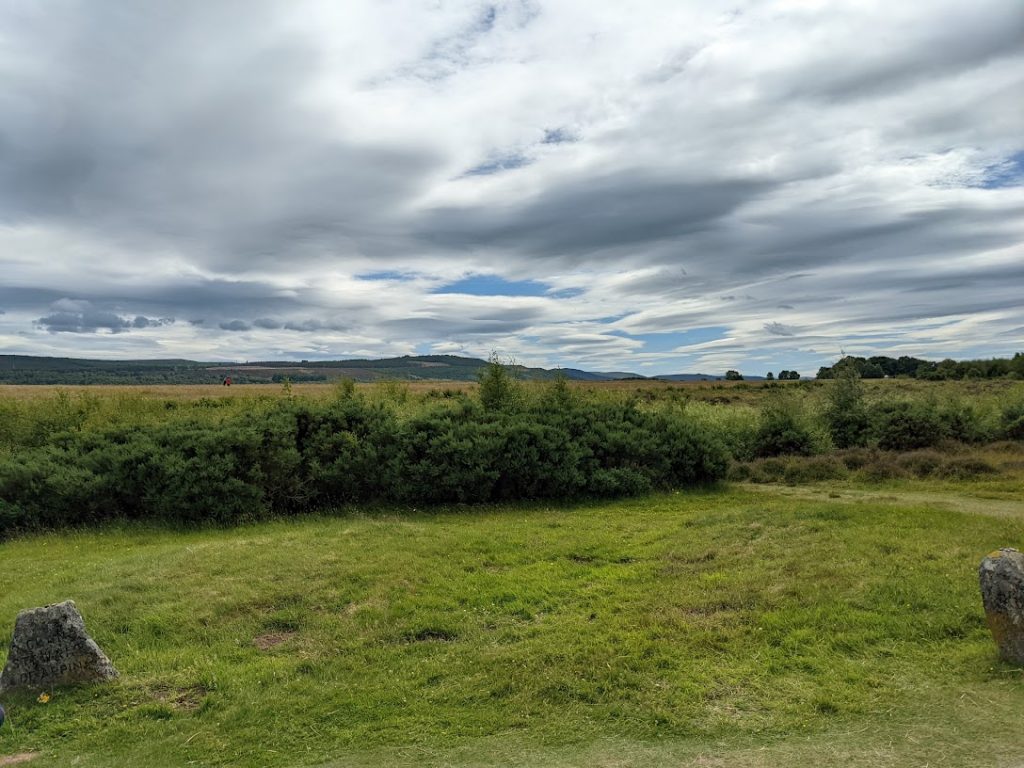
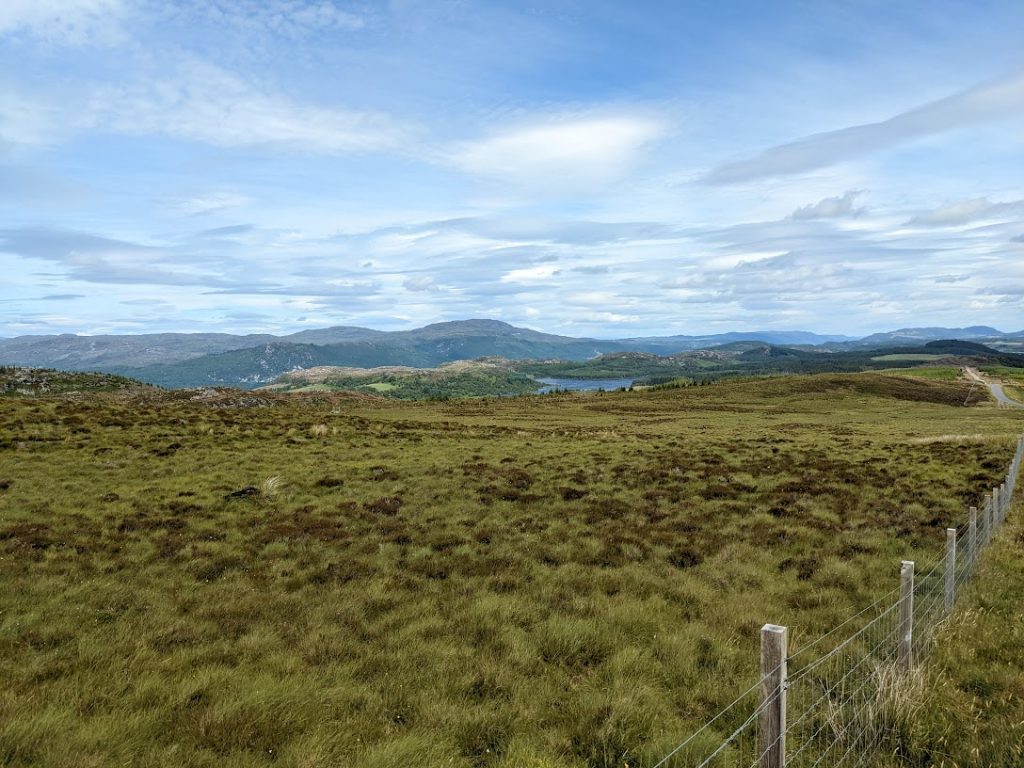
For our final day in the highlands, we let the boys relax at home under Henry’s care with instructions to do homework while Karen and I drove off to see the Isle of Skye. (This happens to be the day the wi-fi was completely out, so they only did as much homework as they could eke out with Henry’s hotspot.)
Our main destination in Skye was Dunvegan Castle, which is the historic seat of the Clan MacLeod (and also the hero of the movie Highlander!) We mostly were just looking for a place to visit as we enjoyed the natural beauty that Skye is famous for. We enjoyed the day:
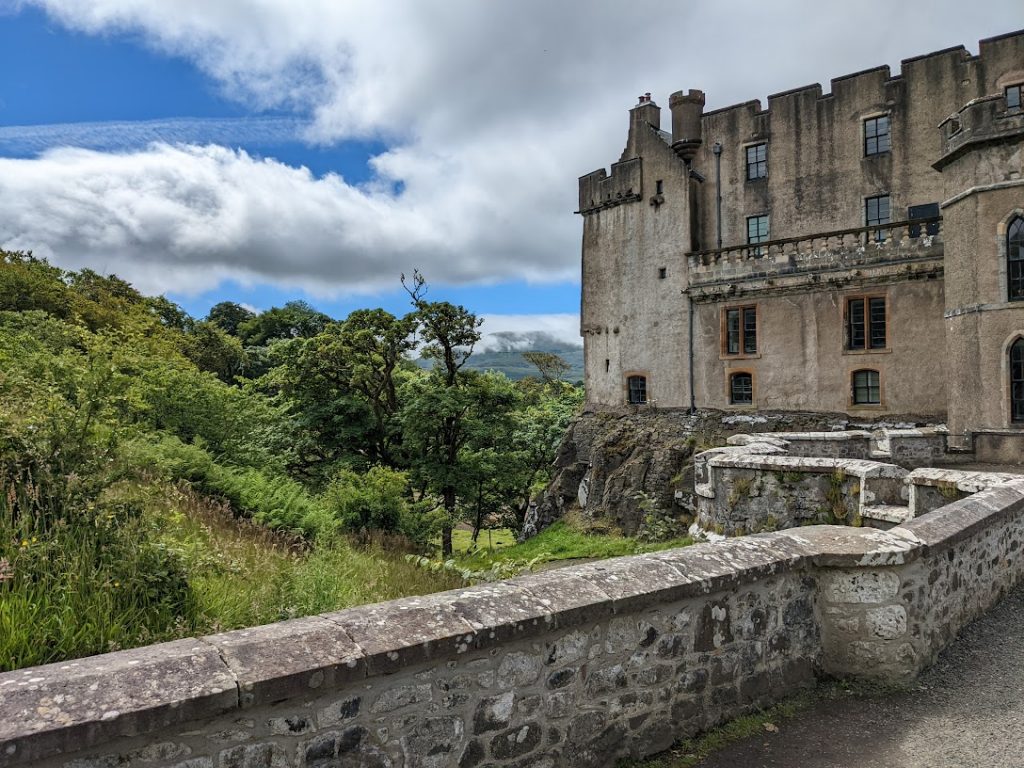
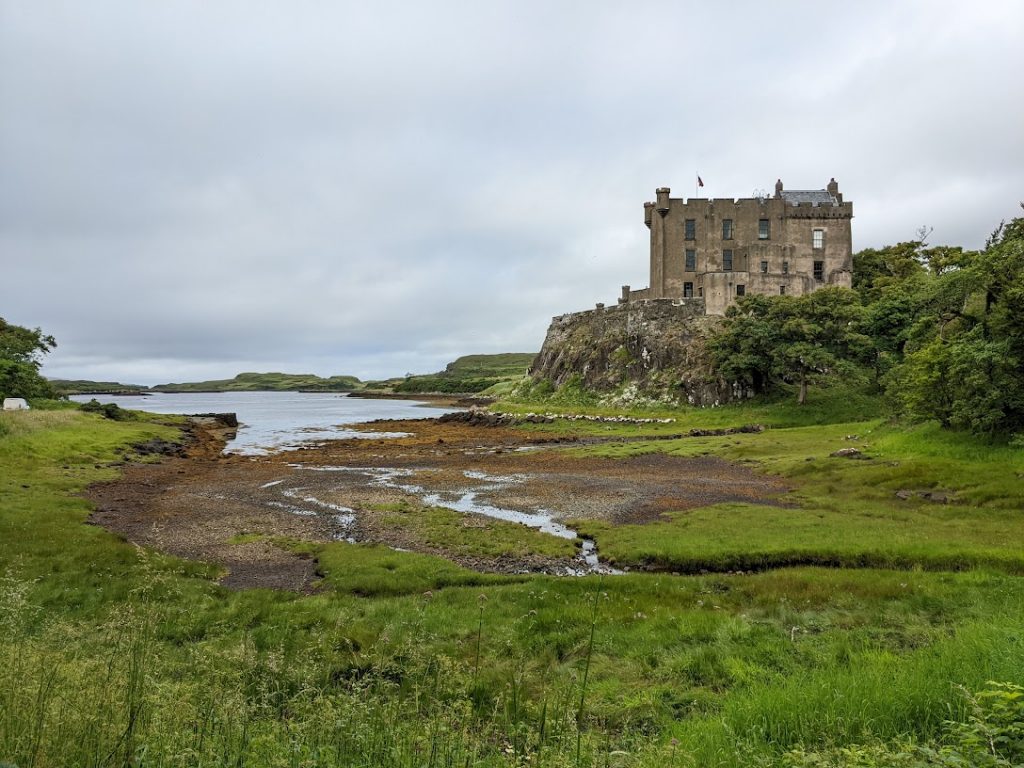
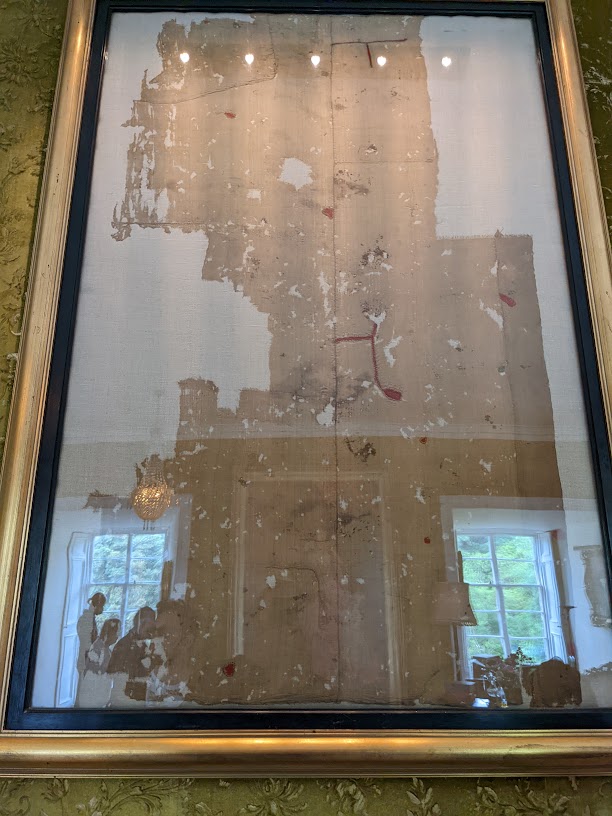
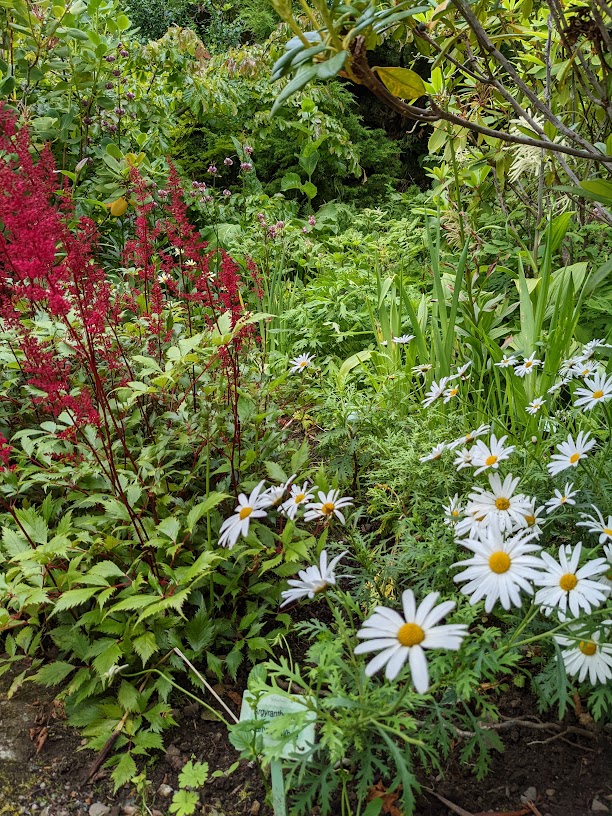
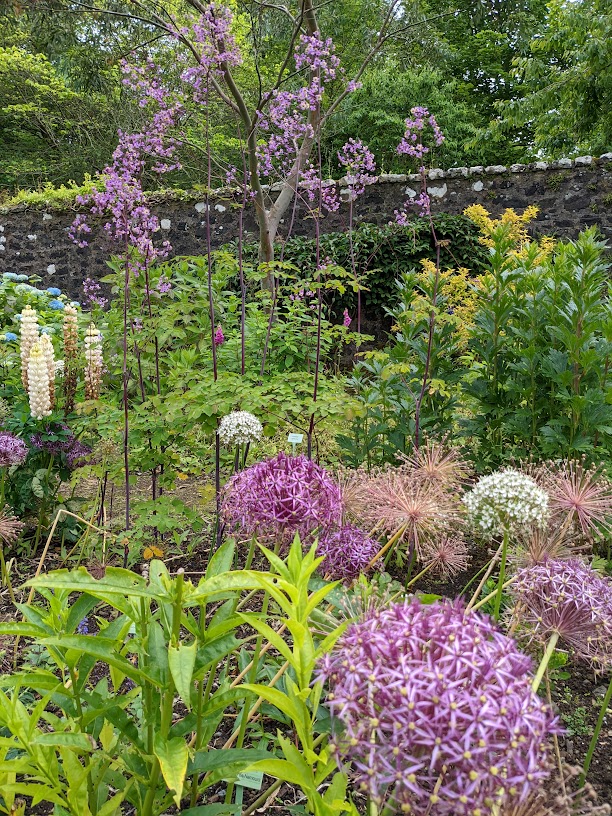
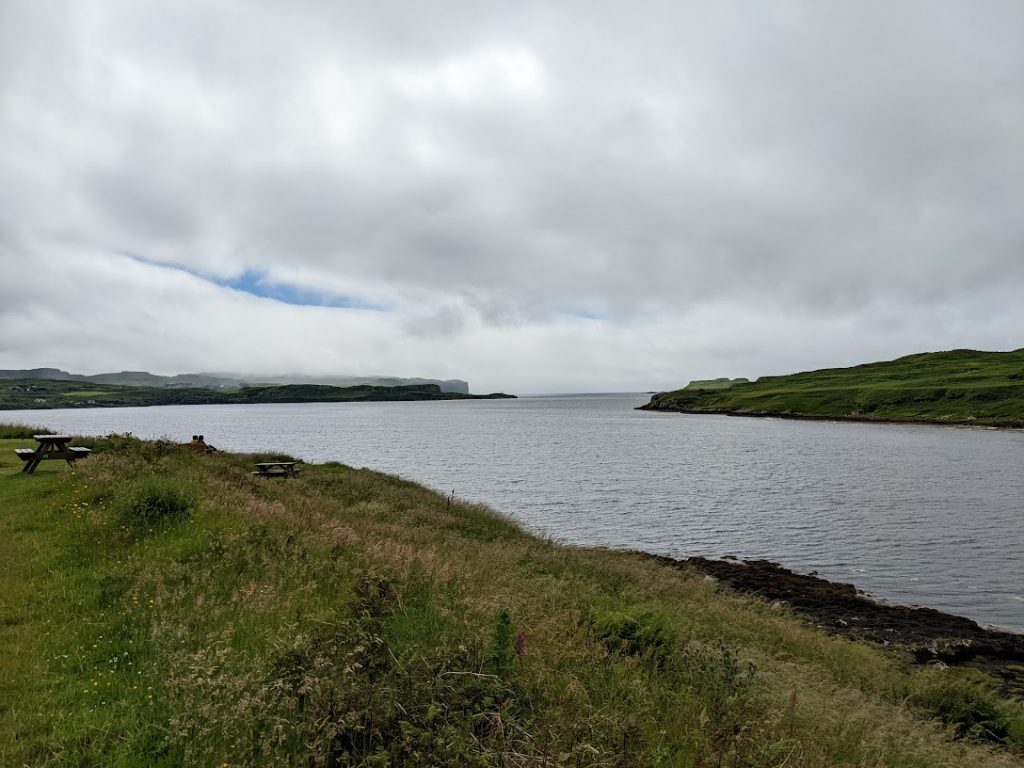
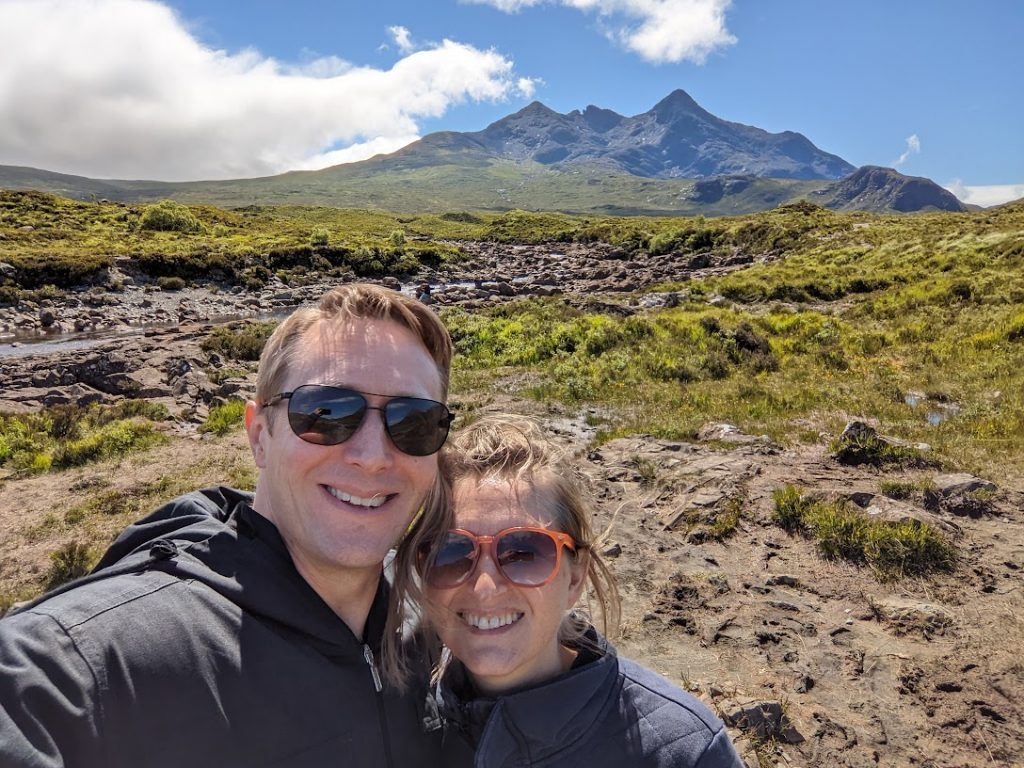
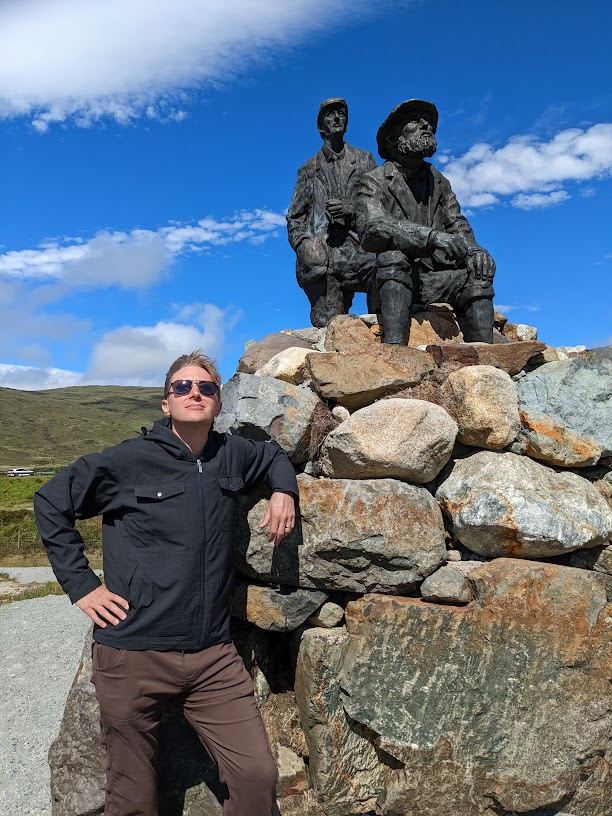
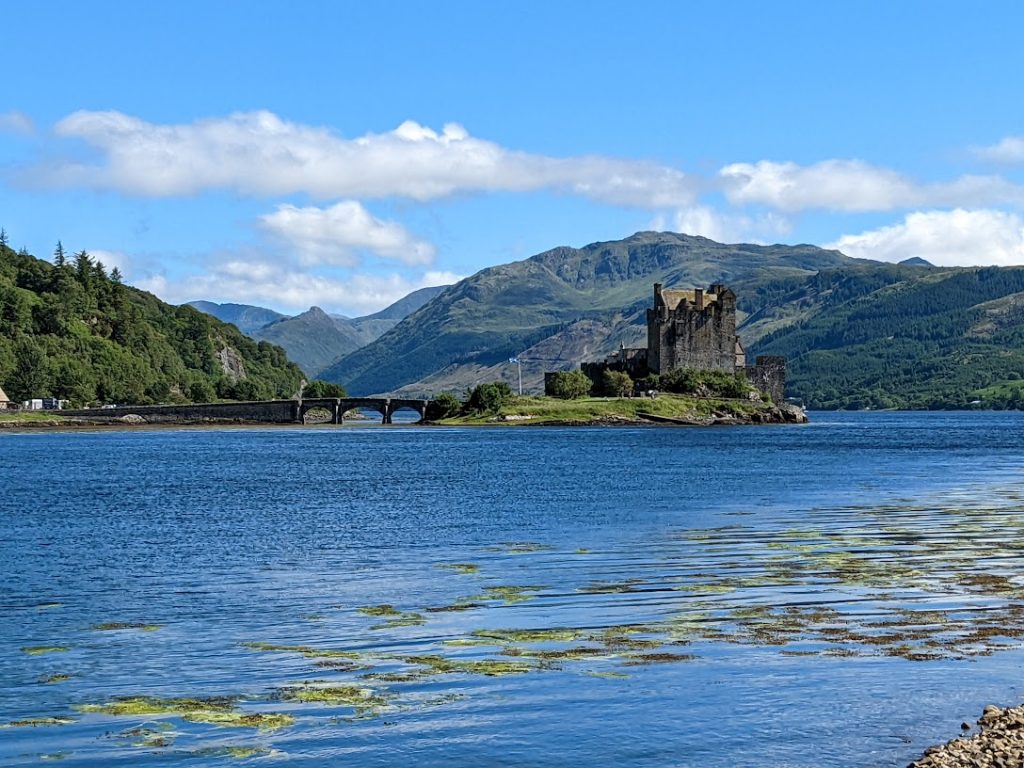
After our time in Skye, we headed back to Edinburgh and caught a train to London. The train was very delayed, which we’ve collectively decided not to discuss further, but we got there anyway.
Because I already counted the UK in my last post, our family country count remained the same:
- 6th country of our trip
- Me: 57 countries (including 30 eating McDonalds)
- Karen: 55 countries
- Henry: 21 countries
- Charlie: 15 countries
- James: 12 countries
That was so detailed and wonderful thank you Matt. I of course enjoy the family anecdotes. Lol
Keep taking us along
Did you happen upon any Highland cattle ?
Thanks for the stories and photos. They are a treat.
We saw a few by the side of the road, but mostly regular ones, sadly. In my 1999 visit, I had to pause 3-4 times for a herd to cross the road, but that was on the smaller roads north of Inverness.
I love to read about all the places you visit and see the photos you have taken. I makes me feel homesick for my travelling years. It is so neat to see my grandkids every week. I totally enjoy it. It makes my day.
Thanks Matt.
Mom and Oma